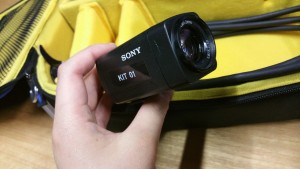A conversation with Azim
– Memory in fragments, thinking back to our past
– Voyeurism, memory of eavesdropping
– simultaneous individual experiences, our ability to relate two individual experiences or events. (consider Soviet Montage)
– I am the camera, its my pair of eyes
– knowing what is beyond the frame vs. letting yourself be the camera through the screen
– presenting reality. Reality TV ‘more representative’ of America than movies are
– Ways of Seeing – John Berger, picture worth a thousand words
– Image or words are just different and equal mediums that can be suitable for delivering certain concepts depending on what it is
– The Nature of the Physical World – Arthur Eddington in David Lynch Swerves by Martha P. Nochimson
– imagery, visual aesthetics limiting concepts or imagination or experience down to a 3 dimensional visual experience that is then flattened onto a 2 dimensional plane
– act of filming being related to the expectation to present it to others. Filming for others
– Obsession with coherence in watching a film. A film as one story, has to make sense. rather than every bit of seemingly unrelated experiences or events being a part of one film (LIFE).
– Life is boring, spontaneous, random
– Film is a part of reality, films or film culture makes up part of our reality
– “Imagine an eye unruled by man-made laws of perspective, an eye unprejudiced by compositional logic, an eye which does not respond to the name of everything but which must know each object encountered in life through an adventure of perception.” – Stan Brakhage.
– The camera changed the world not just historically, but in a more recent context, globalisation would be a slower process. Moving images and images in the social network, or information world.
– Without TV I wouldn’t be able to articulate my thoughts. (We should have mentioned how language affect our thinking process)
– It’s more realistic to think of media depictions of culture as “what American like to celebrate or value” or “what Japanese culture like to celebrate or value”
– Australian identity? Australian cinema?
– conversation gets into hippy territory…
